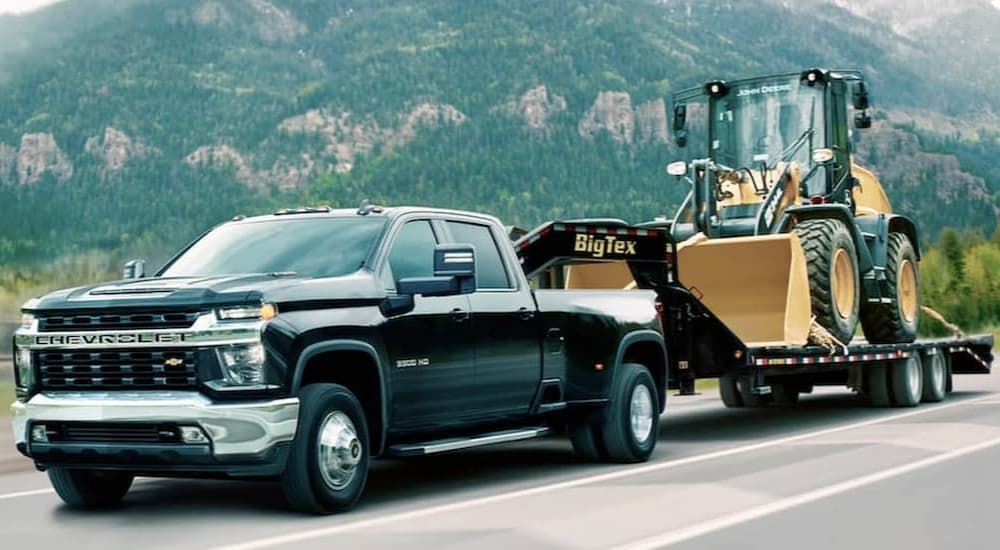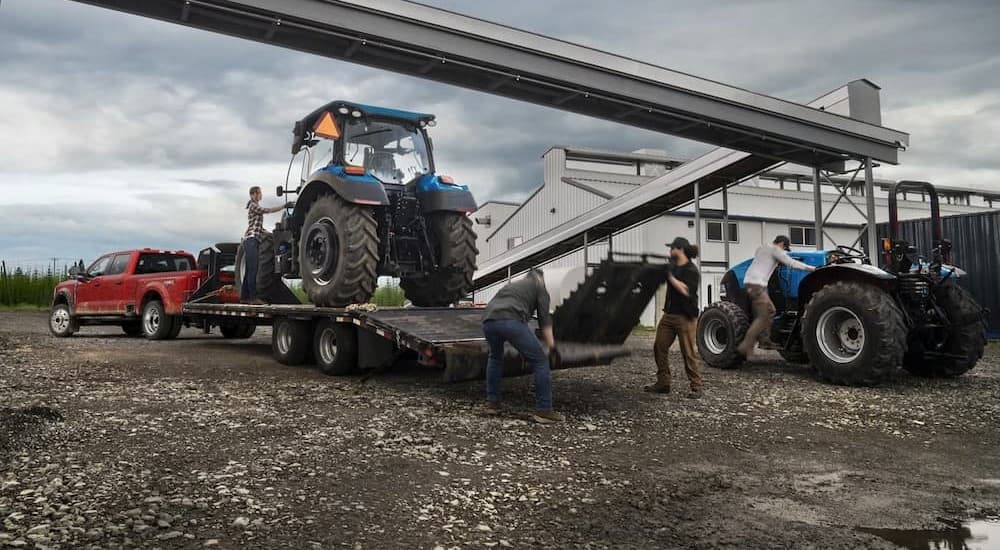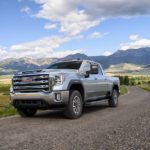When you’re looking into heavy duty trucks for sale, you are probably considering all sorts of factors. You’re likely looking at the towing and payload capacities to make sure the truck can handle moving the goods and products that you transport on a regular basis. Perhaps you need a truck that can tow a certain piece of farm or construction equipment, so you’re checking those figures. If you plan on also using it as your commuter vehicle, you’re likely looking into the comfort of the cabin. Does it have good connectivity? How about the contouring of the seats and the upholstery?
Are there good driver assist features?
It might not be until you’re far into the shopping process that you finally ask a sales associate, “What’s the fuel economy like on this thing?” Then you’ll be surprised to find that they might not know the answer. It’s not that you’re working with an uneducated associate. The truth is that nobody really knows the answer. When it comes to heavy-duty trucks, the EPA actually doesn’t require them to report fuel economy. In recent years, many people have started to ask why. Here’s a look at the reasoning behind this decision.
Which Trucks Avoid the Reporting?
Any truck with a Gross Vehicle Weight Rating of over 8,500 pounds is not required to go through the EPA’s fuel economy testing. The Gross Vehicle Weight Rating (GVWR) is the absolute total weight that your truck can support, including its own body, frame, passengers, cargo, and any accessories or equipment you might be towing. If your truck’s GVWR exceeds 8,500 pounds, you can stop trying to find its fuel economy on the Environmental Protection Agency’s or similar authoritative body’s websites. It’s not there.

Why Don’t Heavy-Duty Truck Manufacturers Have to Report MPGs?
Small trucks, like the light-duty Silverado 1500 and Ford F-150, must have their fuel economy made public. The same goes for SUVs and sedans. Why are heavy-duty trucks exempt from the rules? It’s because, put simply, nobody expected people to drive them around very much.
Sedans have been popular commuter vehicles for professionals and city drivers. SUVs are common for families who drive all around town, and take the kids on road trips. Many people use their light-duty trucks as their everyday vehicles, too. But back in the day, most drivers only used heavy-duty trucks to haul equipment or goods around a job site, like a farm or construction zone. They just weren’t held to the same fuel efficiency regulations as traditional commuter vehicles because they were specialized vehicles for a specialized job, not daily drivers.
Just because vehicle manufacturers are not required to publish the fuel economy of their heavy-duty trucks doesn’t mean that they don’t know those figures. They’ve typically done test drives and somebody, somewhere, knows those MPG figures. But if they don’t have to, by law, publish them, they usually won’t because those MPGs aren’t going to be great.
Are Regulations Changing?
As it so happens, the EPA is tightening up the rules surrounding heavy-duty trucks and fuel economy. They put out a major proposal in 2021 to revise the fuel economy regulations for heavy-duty trucks, and in 2023 they announced yet another proposal to make fuel economy rules more strict for heavy-duty trucks.
Each new set of regulations has been designated as a “phase.” With each phase, truck manufacturers need to work just a little harder to meet emissions requirements. The good news is that when they do meet those requirements, they get something called an “emissions credit,” which basically allows them to produce carbon emissions at other times. Think of it as their way of earning the right to do a little bad by doing a little good.
Why Do We Care Now?
Today, all sorts of drivers buy heavy-duty trucks. They’re no longer just for contractors, farmers, or those who have to transport heavy goods and equipment. Many people want the power of a heavy-duty truck, but also want to use that truck as their everyday vehicle. Trucks offer unbeatable cargo area, and for campers and adventurers they offer some of the best towing abilities for RVs, boats, and the like. People are driving their trucks farther distances than they once did, which means their traditionally poor fuel economy that was once “no big deal” is becoming a bigger deal.
There’s also the fact that heavy-duty trucks seem to keep getting bigger. People like beefy, hefty pickups that make a statement. Those same trucks tend to create more pollution.
People are becoming more alert to climate change, and know that the fossil fuels burned in gas engines emit carbon emissions that are bad for the planet. Combine the increased everyday use of heavy-duty trucks with the increased awareness of pollution, and suddenly the EPA is a little more worried about these vehicles’ fuel economy.
What Does the Future Look Like for Heavy-Duty Trucks?
Some experts predict a price increase as manufacturers go back to the drawing boards to redesign their heavy-duty trucks and make them more fuel efficient. As we move towards what looks like a world where the EPA might require manufacturers to report the MPGs of these massive vehicles, they might be scrambling to improve the fuel economy.
We are certainly seeing an increase in the sales of electric heavy-duty trucks. Between 2016 and 2022, there was a significant uptick in the sales of EV trucks. Chevrolet has an EV Silverado and Ford has an EV F-Series truck. For now, the EVs for these trucks remain in the light-duty class, but it’s easy to see how heavy-duty options might get electric powertrains soon enough.
For now, if you want a gas-engine heavy-duty truck with optimal fuel economy, consider a diesel, as these tend to offer more fuel efficiency along with outstanding torque for towing.
Nobody Knew How Much Drivers Would Love Heavy-Duty Trucks
The world of automobile manufacturers, as well as governing agencies in charge of emissions, didn’t know that people would start driving heavy-duty trucks as much as they do. When heavy-duty trucks first came out, the majority of people who bought them did so for work purposes and heavy-duty applications. You saw them on farms. You saw them pushing snow plows. You saw them dragging cement across construction sites. They didn’t go far, so few people asked about their fuel economy. When a truck only travels 100 yards across a job site per day, its fuel economy seems insignificant.
Today, however, people love their heavy-duty trucks. You see them at the carpool pickup and in the grocery store parking lot. They aren’t just good for moving cement and equipment, but also good for transporting motorcycles and groceries. As Americans took to the open road more in these huge trucks, the EPA began to realize they might need to become more strict on fuel economy for these vehicles. For now, you still will not find the EPA-estimated MPGs of heavy-duty trucks. However, you might find that dealerships are more ready with the information, because consumers are asking for it. If you wait a little longer, don’t be surprised if more electric heavy-duty trucks pop up as well.






